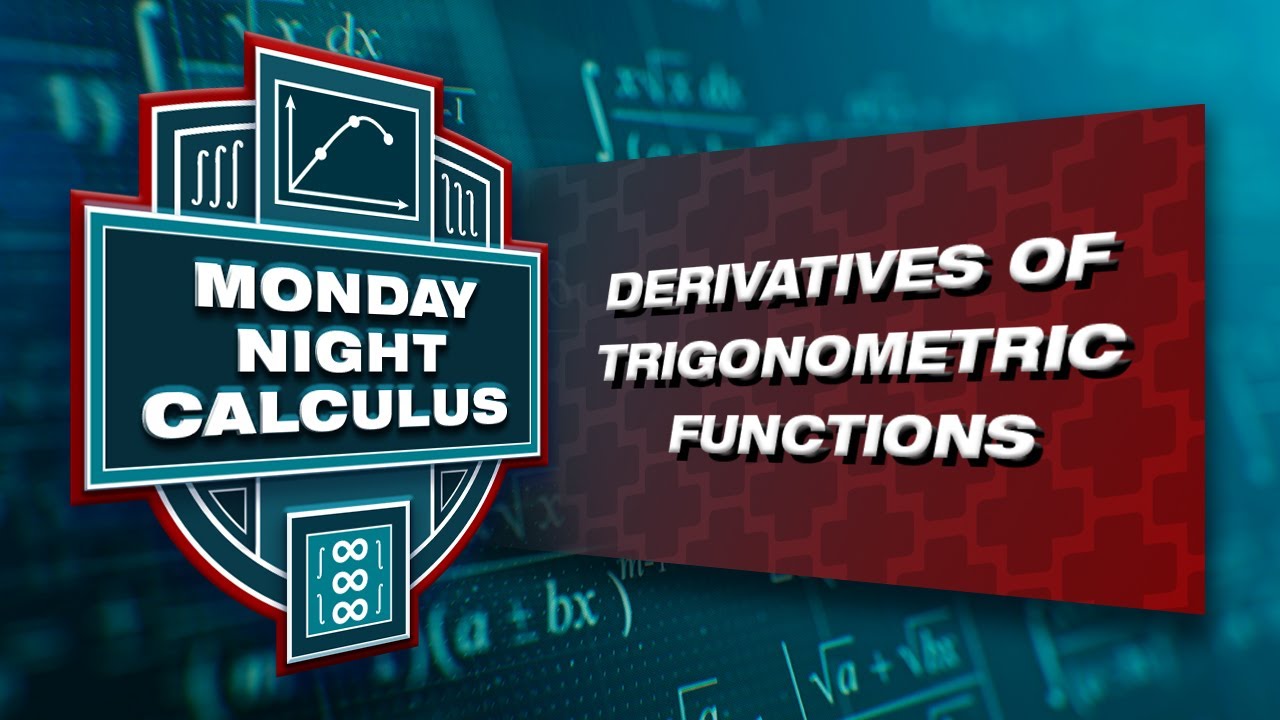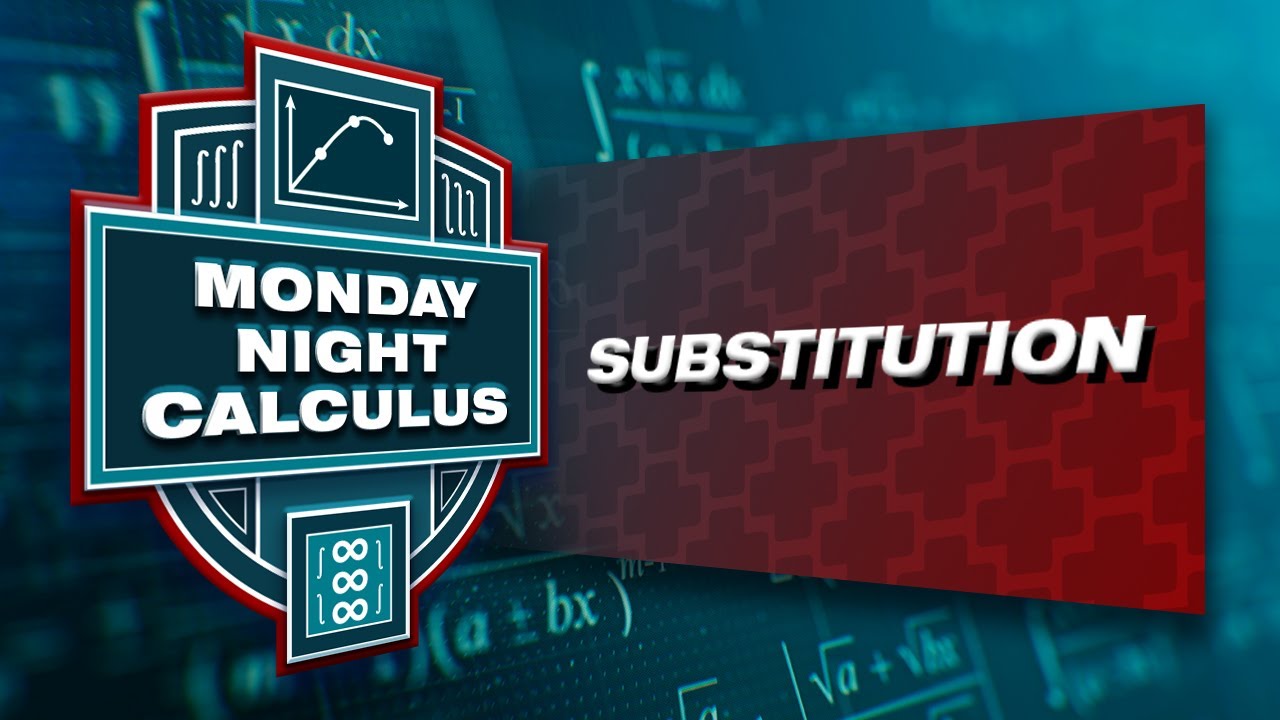Monday Night Calculus: Reviewing for the AP exam
TLDRThe transcript captures an engaging and informative session of 'Monday Night Calculus,' hosted by Curtis Brown, with Steve Kakoska and Tom Dick. The session focuses on preparing for the AP Calculus exam, discussing common errors students make and offering valuable tips for tackling various calculus problems. The hosts cover topics such as the derivative definition, the quotient rule, chain rule, and the mean value theorem. They also address notational issues and the importance of proper mathematical communication on the exam. Additionally, the use of calculators for solving problems, such as finding volumes and areas, is discussed, emphasizing the need for precision and clear presentation of work.
Takeaways
- 🎓 The importance of understanding common errors in calculus, such as simplifying limits incorrectly or misapplying the quotient rule, was emphasized.
- 🚫 Students should avoid assuming f(x) + f(h) when simplifying limits, as this is only true under special circumstances.
- 💡 The concept of the derivative was discussed, highlighting the need to evaluate f at x and x+h and then simplify the limit.
- 📝 When applying the quotient rule, ensure the terms in the numerator are in the correct order and parentheses are properly used in the denominator.
- 🔄 The chain rule should be applied correctly when dealing with composite functions, multiplying the derivative of the outer function by the derivative of the inner function.
- 🌀 In particle motion problems, total distance traveled is not the same as displacement, and formulas should be memorized to calculate these quantities.
- 🔢 For the mean value theorem, the value of c that satisfies the theorem is not always the midpoint of the interval, and students should be prepared to find it.
- 📊 When using L'Hopital's rule, take the derivatives of the numerator and denominator separately and evaluate the limit.
- 🤔 Students should be cautious about notational errors, especially when applying L'Hopital's rule and the quotient rule.
- 📈 In definite integral calculations, especially for volume problems, ensure to include all necessary constants and functions in their correct notation.
- 🎓 The session concluded with well wishes for students preparing for the AP calculus exam and reminders for best practices when using a calculator.
Q & A
What is the significance of the mean value theorem (MVT) in the context of the exam?
-The mean value theorem (MVT) is significant as it is a common topic in the AP Calculus exam. Students often make the mistake of assuming that the value of c satisfying the MVT is always the midpoint of the interval, which is not necessarily true. The MVT is an existence theorem, ensuring there is a point c where the slope of the tangent line is the same as the line segment connecting two points a and b, but it does not specify its location.
What is the advice given to students regarding the use of sign charts?
-The advice given is that while sign charts are acceptable to use, they are not sufficient on their own. Students must interpret the sign chart with a sentence or two to provide sufficient justification on the exam.
Outlines
🎓 Introduction and Review of AP Calculus Exam
The video begins with Curtis Brown introducing the last episode of the calculus series. He expresses his excitement for hosting and introduces Steve Kakoska and Tom Dick, who will be assisting in reviewing for the upcoming AP Calculus exam. Curtis highlights Steve's qualifications as a former chief reader for the exam. The main goal of the session is to review key concepts, discuss common errors, and provide tips for tackling the exam. Steve and Tom share their experience with the exam and express their hopes for the students' success.
📚 Common Errors and Tips in AP Calculus
Steve Kakoska leads the discussion on common errors made by students during the AP Calculus exam. He emphasizes the importance of understanding the correct definitions and formulas, especially for derivatives. Steve points out mistakes such as simplifying the limit of a derivative incorrectly and not applying the chain rule properly. He also discusses the significance of proper notation, especially when dealing with the quotient rule and the derivative of composite functions. Tom adds insights on the importance of understanding the difference between total distance and displacement, and the correct application of the mean value theorem. They both stress the need for precision and attention to detail in exam responses.
🚀 Particle Motion and Velocity Functions
The session continues with a deep dive into particle motion and velocity functions. The speakers discuss common misconceptions and errors, such as confusing speed with the absolute value of velocity and not correctly identifying when a particle changes direction. They explain the importance of understanding the difference between velocity and acceleration and how these concepts apply to determining whether a particle is speeding up or slowing down. The speakers also provide strategies for solving problems related to particle motion without a calculator, emphasizing the need to visualize and conceptualize the problem effectively.
📈 Mean Value Theorem and Critical Numbers
The conversation shifts towards the mean value theorem (MVT) and critical numbers. The speakers clarify common misunderstandings about the MVT, such as the assumption that the value of c is always the midpoint of the interval. They discuss the need to identify c correctly and the conditions that make a number critical. The speakers also address the concept of local extreme values and inflection points, underlining the importance of checking for sign changes in the first and second derivatives to determine these features. They remind viewers that critical numbers must be within the domain of the function and that endpoints are not automatically included in intervals of increase or decrease.
🧮 L'Hopital's Rule and Notational Errors
The speakers discuss the application of L'Hopital's rule and highlight common notational errors made by students when using this rule. They explain the correct procedure for applying L'Hopital's rule and the importance of separating the numerator and denominator before taking derivatives. The speakers also address the misuse of the quotient rule and the significance of proper notation when dealing with limits, especially in the context of the AP exam. They provide guidance on how to correctly convey the use of L'Hopital's rule and avoid improper notation that can lead to loss of points.
📝 Best Practices for Using Calculators on AP Exam
Tom shares best practices for using the TI-84 calculator during the AP Calculus exam, focusing on the open-calculator portion of the test. He demonstrates how to accurately find intersection points and store them for later use in calculations. Tom emphasizes the importance of not rounding off intermediate results and maintaining the highest possible accuracy throughout the problem-solving process. He also discusses the efficient use of calculator functions and the benefits of referring to stored values in exam responses. The session concludes with a discussion on the importance of clear communication and presentation of calculations on the exam.
🎉 Closing Remarks and Well Wishes for Exam Success
Curtis wraps up the session by thanking Steve, Tom, and the viewers for their participation and engagement throughout the series. He reiterates well wishes for the students preparing to take the AP Calculus exam, expressing hope for their success. Curtis also mentions the possibility of continuing the Monday Night Calculus series in the future and encourages students to follow Texas Instruments for updates. The session ends on a positive note, with Curtis signing off and wishing everyone a good night.
Mindmap
Keywords
💡Calculus
💡AP Calculus Exam
💡Derivative
💡Integral
💡Common Errors
💡Test Preparation
💡Hosts
💡Mean Value Theorem
💡Quotient Rule
💡Chain Rule
💡Calculator Usage
Highlights
Steve and Tom discuss common errors in AP Calculus, providing insights and tips for students preparing for the exam.
Curtis Brown hosts the last episode of the season, expressing excitement for reviewing AP Calculus exam strategies.
Steve emphasizes the importance of understanding the derivative's definition and avoiding simplification mistakes.
Tom Dick shares his experience and dislikes about teaching to the test, focusing on common errors related to derivatives.
Steve warns against simplifying the derivative definition incorrectly, highlighting the need to evaluate functions properly.
The discussion touches on the concept of functions where the sum of functions equals the function of the sum, prompting mathematical curiosity.
Steve and Curtis discuss the proper application of the quotient rule and the importance of correct notation.
Tom shares insights on the misuse of the chain rule when dealing with composite functions, emphasizing the need for accurate differentiation.
Steve addresses the confusion between the sine inverse function and its derivative, clarifying the correct notation and application.
Curtis and Steve explore the concept of particle motion, discussing common mistakes related to distance traveled and displacement.
Steve explains the proper way to find the derivative of a function using the chain rule, highlighting the importance of step-by-step differentiation.
Tom and Steve discuss the importance of understanding the mean value theorem and the potential误区 regarding the midpoint of an interval.
Steve and Curtis talk about the significance of critical numbers in determining local extreme values and the need for proper sign analysis.
Tom shares best practices for using the TI-84 calculator during the AP exam, stressing the importance of accurate and clear calculations.
Steve addresses common errors in applying L'Hopital's rule and the proper way to demonstrate its use in solving limits.
Curtis and Steve wrap up the season with well wishes for students taking the AP Calculus exam, encouraging preparation and clear communication in problem-solving.
Transcripts
Browse More Related Video

Monday Night Calculus: Strategy for testing series

Monday Night Calculus: Derivatives of Trigonometric Functions

Monday Night Calculus: Substitution

Fall 2023 MNC: Up close and personal with differentiability and local linearity

8 | FRQ (No Calculator) | Practice Sessions | AP Calculus AB

Monday Night Calculus: Volume
5.0 / 5 (0 votes)
Thanks for rating: